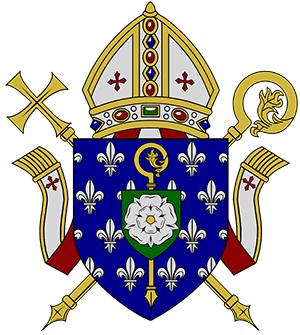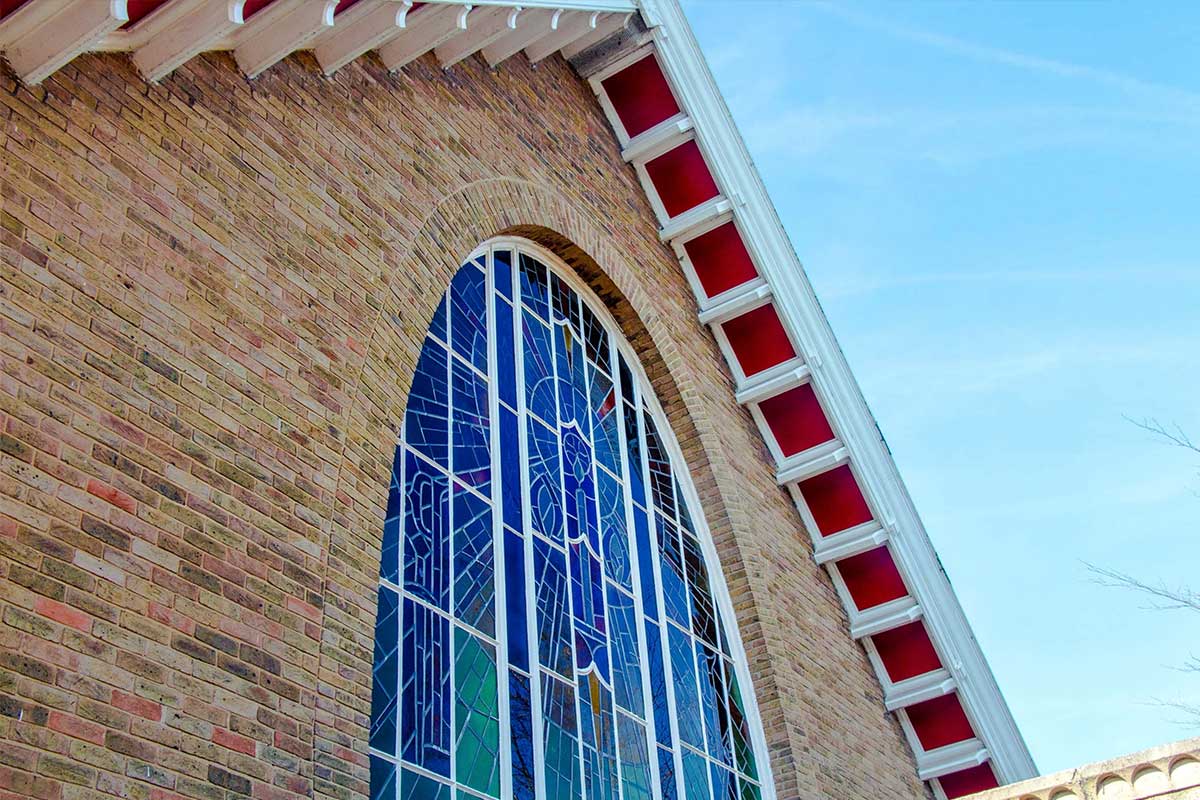
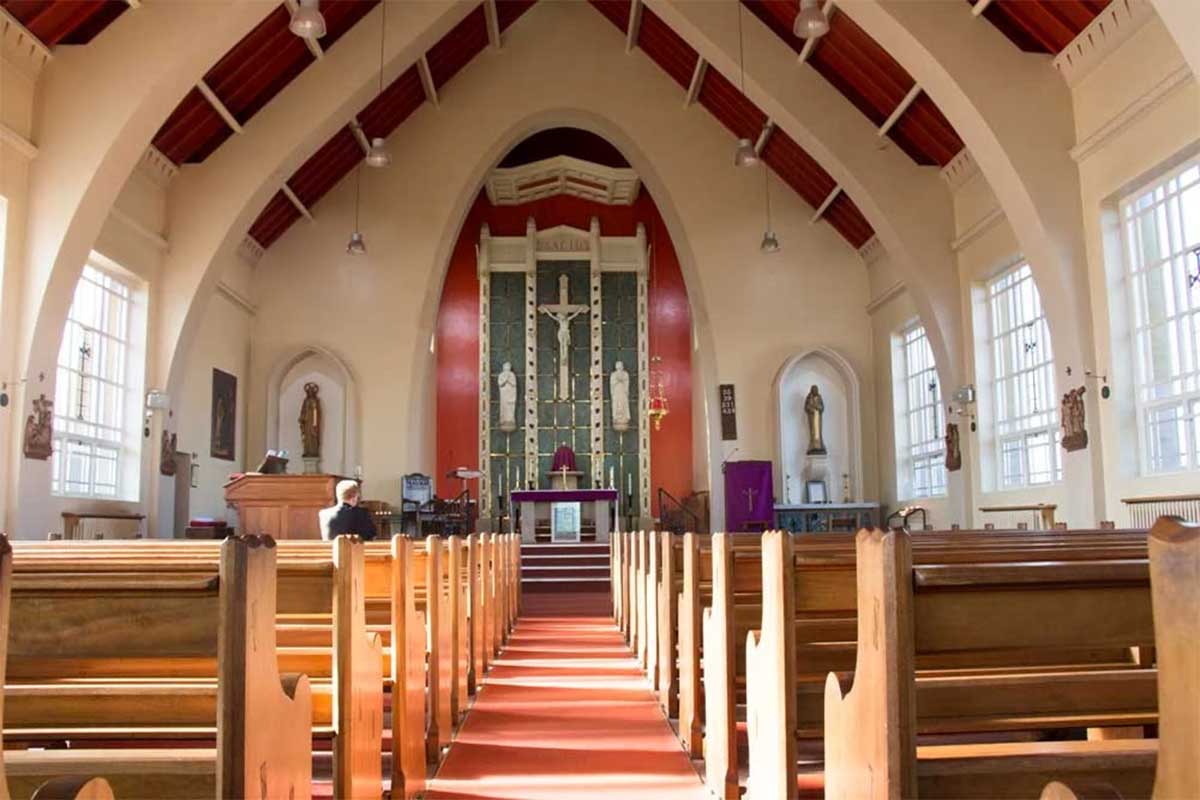
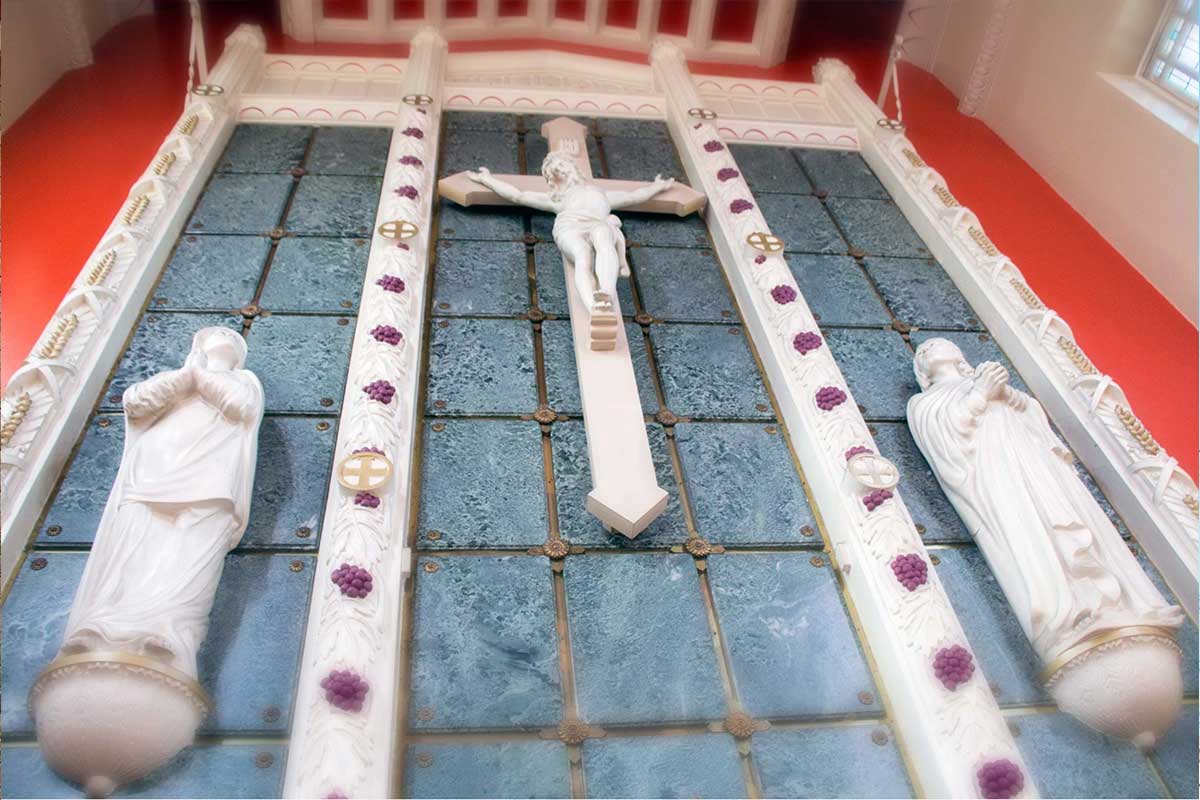
History
Until 1909, the Guiseley and Yeadon areas were served either by Our Lady and All Saints Church in Otley or a Mass centre which occupied a room above a shop on the street known as the ‘The Steep’ in Yeadon. The driving force behind a new church for the area was John Warrington, owner of St John’s Colliery at Normanton. He lived in Cragwood, in Rawdon and at first Mass was said in an upper room of his house. The registers show baptisms recorded there from 1876 onwards, the priests travelling to Rawdon from Bradford or Leeds. In 1907 the foundation stone was laid for a chapel in the grounds of Mr Warrington’s house, and the Church of Our Lady of Good Counsel and St Joseph, Rawdon opened in 1909.
The chapel was designed to seat 120 and was built by Ned Barrett of Rawdon, using Bradford Delf stone, and finished internally with red bricks from Italy. A large presbytery was built next door with Canon Francis Wood being the first resident priest. John Warrington died before the church was completed. Following the building of the church of St Peter and St Paul in 1956, the chapel became a chapel-of-ease until it finally closed in 1989 and was converted for housing.
During the Second World War there was a large growth in the area’s population, with an influx of workers for the underground AVRO works on Harrogate Road, where the Lancaster bomber was made and assembled. A Mass centre was established in Otley Road, Guiseley, and this later relocated to Guiseley Town Hall. By 1953 more people were attending Mass at the Town Hall than at the Cragwood chapel and it was decided to build a new church in Yeadon. A plot next to the A65 was obtained, then being used for allotments. The church was designed by J.H. Langtry-Langton of Bradford and built by M. Harrison & Co of Leeds. The foundation stone was laid by the Bishop of Leeds, Bishop John Carmel Heenan on 13 June 1955. The church was opened by Bishop Heenan on 29 June 1956, and it was consecrated by Bishop George Patrick Dwyer on 20 October 1959.
The church is an interesting, eclectic mix of modernist and Art Deco classical details. Built in pink brick with a tiled roof, the building projects forward from the adjoining presbytery. The irregular, flat-roofed entrance porch, extended in 1972, has double wooden doors with a decorative surround. The entrance area was remodelled in 2020. In 1996 work began on extending the basement of the church to provide additional facilities. The basement areas were enlarged and altered and in February 1997 the parish rooms were opened.
The Church of SS Peter & Paul benefits from a high level of natural light, producing a bright and uplifting interior. The nave has a central aisle with flanking rows of plain pews made in 1959 by members of the parish. The church was built to accommodate a congregation of 340. The north side of the church contains a small chapel dedicated to St Joseph with two narrow windows, with stained glass by Clokey of Belfast depicting St Peter and St Paul. The west window depicts a centrally placed Paschal candle and the symbols of Saints Peter and Paul and is probably also by Clokey. Also at the west end is a chapel dedicated to St Martin de Porres.
The sanctuary is reached up four steps and is marked by some of the original metal altar rails which have been altered and adapted. The free-standing altar was installed when the sanctuary was reordered in 1972. The main feature of the sanctuary is the striking reredos, donated to the church in 1959 by Mr and Mrs Brennan. This fills most of the east wall and in the centre is a large white Crucifix with Our Lady and St John on either side of the crucified Christ. The reredos is surmounted by an original canopy. The sanctuary lamp was brought from St Joseph’s, Cragwood and restored and donated to the parish by a former Parish Priest, the late Canon Vincent Fr O’Hara.
